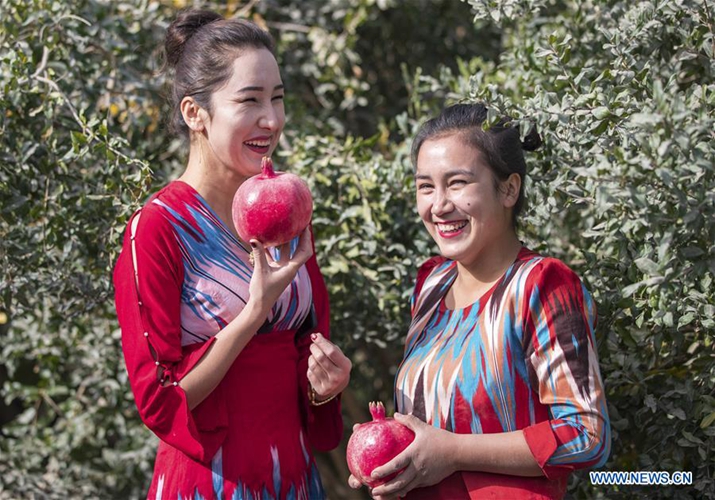
Farmers pick megranates in Pishan County of Hotan, Xinjiang Uygur Autonomous Region in northwest China on October 8. In summer and autumn, the vast land in Xinjiang embraces the harvest season (XINHUA)
When it comes to Xinjiang Uygur Autonomous Region in northwest China, China's attitude is worlds apart from those of some Western countries, especially on the region's development and the terrorism that occurred there. Along with financial assistance, technical training, and educational and medical support, the Chinese Government's anti-violence and counter terrorism activities in Xinjiang have restored stability. Western countries, particularly the United States, lambast these counter-terrorism activities while accusing China of violating human rights.
This difference in attitudes comes from two totally different positions. China's stance is that the ethnic groups in Xinjiang are members of a big family, that is the Chinese nation. China's development and its revitalization are common causes shared by all ethnic groups, and those in Xinjiang are not an exception. The Western stance is treating terrorism in Xinjiang as an opportunity to destabilize China and jeopardize its development.
Xinjiang residents'incomes have seen a marked increase and poverty has been almost totally eliminated. The incidence of poverty has dropped from 19.4 percent in 2014 to 1.24 percent in 2019. Poverty no longer limits access to compulsory education. Children once unable to attend school due to poverty receive additional government assistance. Critical illness insurance and basic medical insurance have been extended to the poorest. Along with the rest of the country, Xinjiang is transitioning to a moderately prosperous society in all aspects.
China has a system of regional ethnic autonomy. People of ethnic minority account for more than half of all officials across all levels of government in Xinjiang. More than half of the people's congress deputies come from ethnic minority backgrounds.
Freedom of religious belief is also guaranteed. Xinjiang has an ethnic minority population of 15 million, accounting for 60 percent of the region's total population. There are 24,800 religious venues in Xinjiang. The number of such venues and the time spent on religious activities per person in Xinjiang are more than those in the United States. The terrorist attacks in Xinjiang had nothing to do with human rights or religion. Many were in essence secessionist campaigns meant to separate Xinjiang from China. This was the fundamental reason for violence and terrorism in Xinjiang.
The Third Central Symposium on Work Related to Xinjiang, held in September this year, set the general goal of maintaining the long-term peace and stability needed for the development of Xinjiang. To build a stable, harmonious and beautiful Xinjiang is the common goal of efforts made by both the Central Government and the people of Xinjiang.